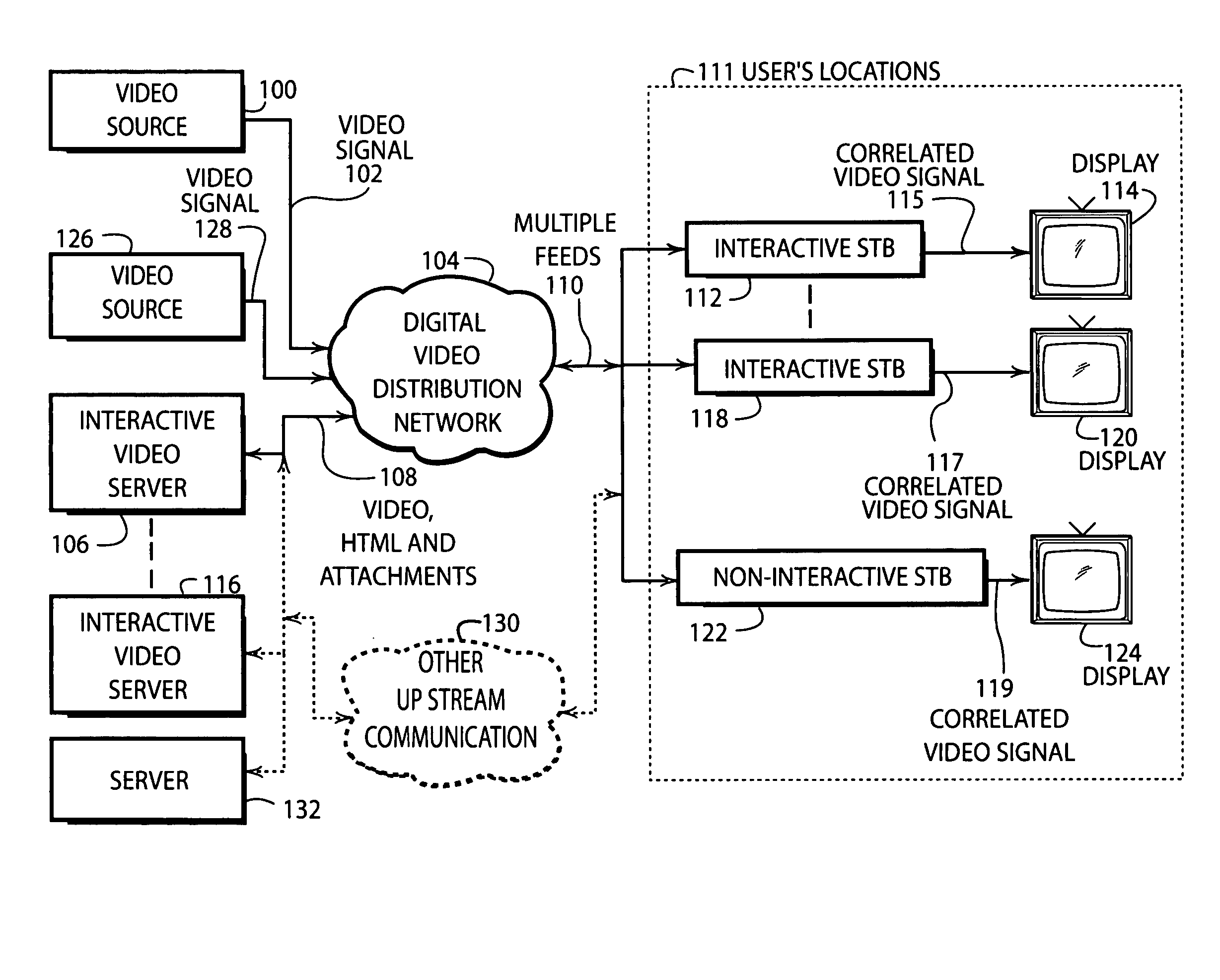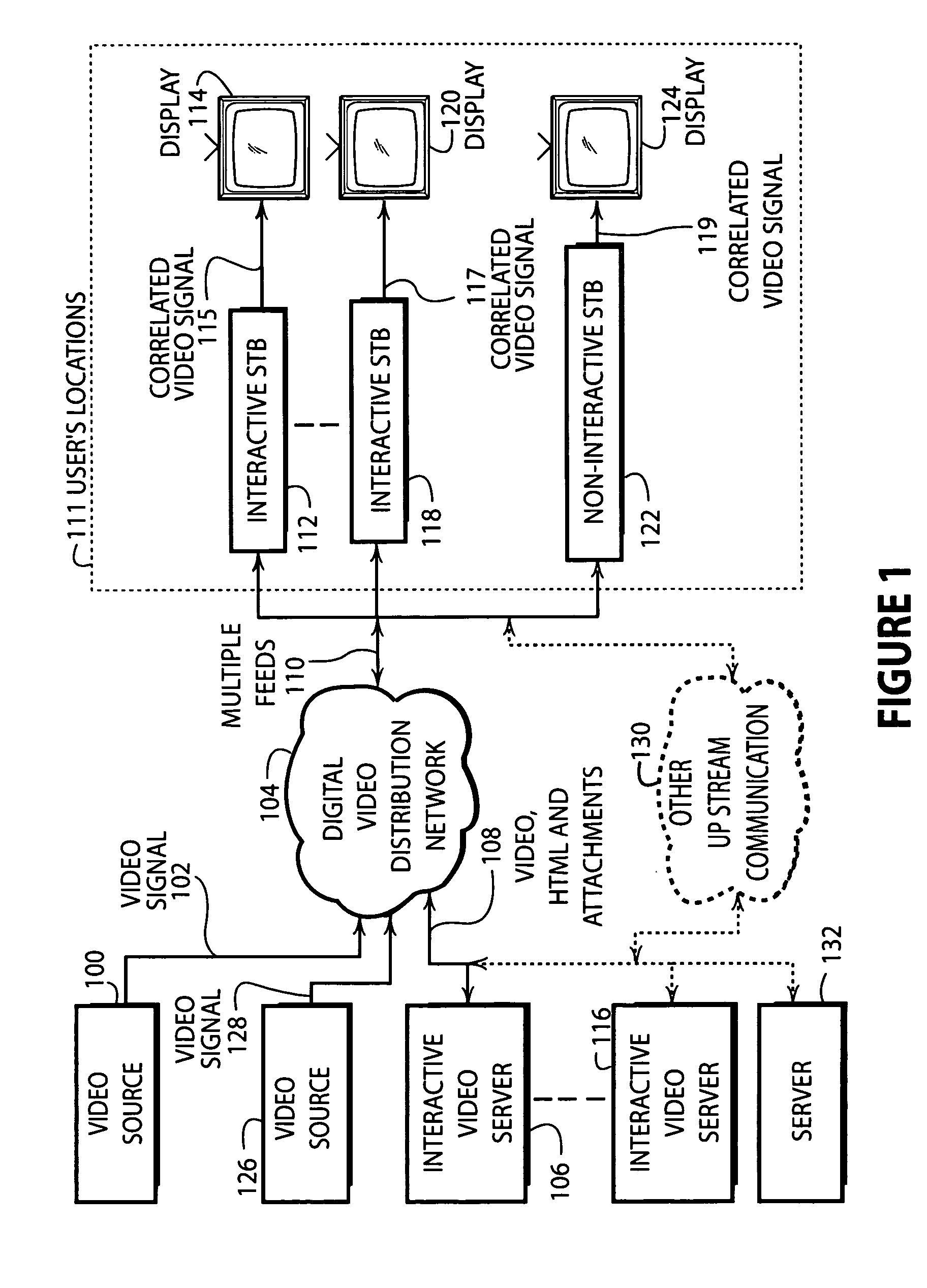Advertising methods for advertising time slots and embedded objects
a technology of time slots and advertisements, applied in the field of television advertising, can solve the problems of limited amount, change of interest, and requirement of advertisers, and achieve the effect of reducing the number of advertisers and increasing the number of advertisers
- Summary
- Abstract
- Description
- Claims
- Application Information
AI Technical Summary
Benefits of technology
Problems solved by technology
Method used
Image
Examples
embodiment 300
[0070]FIG. 3 illustrates an embodiment 300 of the present invention wherein four video signals, 302,304,306, and 308, may be combined into four composite video signals 310, 312,314, and 316. The video signals 302 and 304 represent advertisements for two different vehicles. Video signal 302 shows an advertisement for a sedan model car, where video signal 304 shows an advertisement for a minivan. The video signals 306 and 308 are background images, where video signal 306 shows a background for a mountain scene and video signal 308 shows a background for an ocean scene. The combination or composite of video signals 306 and 302 yields signal 310, showing the sedan in front of a mountain scene. Similarly, the signals 312, 314, and 316 are composite video signals.
[0071] In the present embodiment, the selection of which composite image to display on a viewer's television may be made in part with a local preference for the viewer and by the advertiser. For example, the advertiser may wish t...
embodiment 400
[0072]FIG. 4 illustrates an embodiment 400 of the present invention wherein a main 10 video image 402.is combined with portions of a second video image 404. The second video image 404 comprises four small video images 406,408,410, and 412. The small images may be inserted into the main video image 402 to produce several composite video images 414, 416, 418, 420, and 422.
[0073] In the embodiment 400, the main video image 402 comprises a border 424 and a center advertisement 426. In this case, the border describes today's special for Tom's Market. The special is the center advertisement 426, which is shrimp. Other special items are shown in the second video image 404, such as fish 406, ham 408, soda 410, and steak 412. The viewer preferences may dictate which composite video is shown to a specific viewer. For example, if the viewer were vegetarian, neither the ham 408 nor steak 412 advertisements would be appropriate. If the person had a religious preference that indicated that they w...
PUM
 Login to View More
Login to View More Abstract
Description
Claims
Application Information
 Login to View More
Login to View More - R&D
- Intellectual Property
- Life Sciences
- Materials
- Tech Scout
- Unparalleled Data Quality
- Higher Quality Content
- 60% Fewer Hallucinations
Browse by: Latest US Patents, China's latest patents, Technical Efficacy Thesaurus, Application Domain, Technology Topic, Popular Technical Reports.
© 2025 PatSnap. All rights reserved.Legal|Privacy policy|Modern Slavery Act Transparency Statement|Sitemap|About US| Contact US: help@patsnap.com



